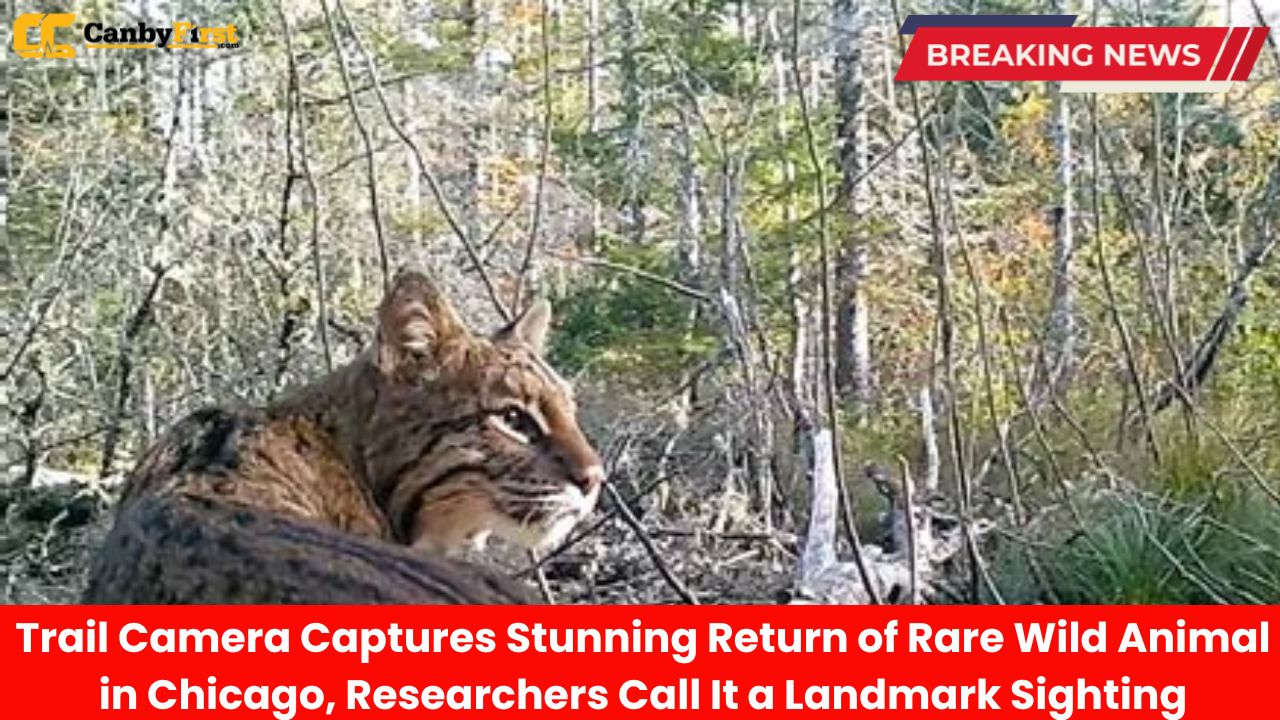Chicago, US: In a remarkable turn of events, a trail camera set up by local researchers in the northern suburbs of Chicago captured a rare wild animal making its unexpected appearance near the city’s outer greenbelt this week. The sighting has thrilled wildlife experts and conservationists, who describe it as one of the most exciting urban wildlife moments in years.
Researchers from the Midwest Urban Wildlife Institute had installed a series of trail cameras in wooded areas adjoining residential neighborhoods to study nocturnal animal movements. Early Monday morning, one of the motion-triggered cameras recorded clear footage of a majestic mountain lion, a species that had not been officially spotted in the region for over two decades.
Stunning Revelation Caught on Camera
The discovery came as a surprise to both scientists and local residents. The captured images showed the animal walking gracefully near a creek bed under the faint glow of streetlights. The footage, which researchers reviewed multiple times for verification, showed distinctive fur markings and movement patterns that left no doubt about the identification.
Also Read
“It was such an amazing discovery,” said Dr. Henry Mallory, senior wildlife biologist leading the project. “We expected to see raccoons, foxes, or even coyotes, but a mountain lion in the city limits is extraordinary. This tells us that wildlife corridors connecting rural and urban spaces are functioning better than we thought.”
Experts Highlight Ecological Importance
Wildlife experts say this sighting underscores the adaptability of large predators and the importance of habitat preservation. Mountain lions, also known as cougars or pumas, once roamed across a vast portion of North America. However, urban expansion and loss of natural habitat caused their numbers to dwindle in the Midwest.
Dr. Mallory explained that the presence of such a species indicates improving ecological balance even in metropolitan regions. “Seeing a top predator survive and navigate safely through developed areas means our environmental efforts are starting to pay off,” he said. “It’s a positive sign for biodiversity in and around the city.”
Residents React with Surprise and Curiosity
Local residents were both amazed and slightly anxious after hearing about the rare visitor. Some reported hearing unusual sounds in nearby wooded areas over the past week, though few expected such a large predator could be the source. Community forums and social media platforms quickly filled with discussions and questions about safety and conservation.
City officials assured the public that the animal poses no immediate threat and that wildlife experts are monitoring the situation closely. “There’s no need for panic,” said Chicago Wildlife Commissioner Andrea Cooper. “These animals usually avoid humans. We’re simply asking residents to remain alert and report any sightings to authorities so that experts can track its movement safely.”
Trail Cameras Becoming Crucial for Research
The Chicago team’s success reflects a growing reliance on advanced trail-camera technology for wildlife research. These devices, often hidden deep within vegetation or along animal paths, allow scientists to observe species behavior without human interference. The cameras record images and videos triggered by heat or motion, giving researchers real-time insights into wildlife activity across previously unmonitored zones.
“The beauty of trail cameras is that they bring the invisible world to light,” said field researcher Emily Larson. “You never know what you might capture—a rare bird, a fox, or, in this case, a mountain lion passing through an urban ecosystem.”
Conservation Efforts Strengthen Hope
Following the recent sighting, conservationists are calling for renewed focus on maintaining green corridors that connect regional parks and reserves to suburban and rural landscapes. These passages give large mammals space to roam and help prevent dangerous human-wildlife encounters.
Environmental groups also emphasize the need for continued public education to encourage coexistence. “This remarkable event reminds us that we share our environment with creatures that were here long before our cities,” said Larson. “It’s a wake-up call to protect natural spaces, not just for them but for future generations.”
What Comes Next
Researchers plan to keep the trail cameras active and expand monitoring zones to determine whether the animal is transient or potentially establishing a longer stay within the Chicago region. DNA testing from fur strands or paw prints could also confirm if this mountain lion belongs to a known population from neighboring states.
For now, the discovery remains a reminder of nature’s resilience and unpredictability. In an age where human expansion often dominates ecological headlines, this quiet moment between camera and creature stands as a celebration of the wild’s enduring spirit.
As one researcher put it, “Sometimes the most extraordinary things happen when we simply stop, watch, and let nature reveal its secrets.”











